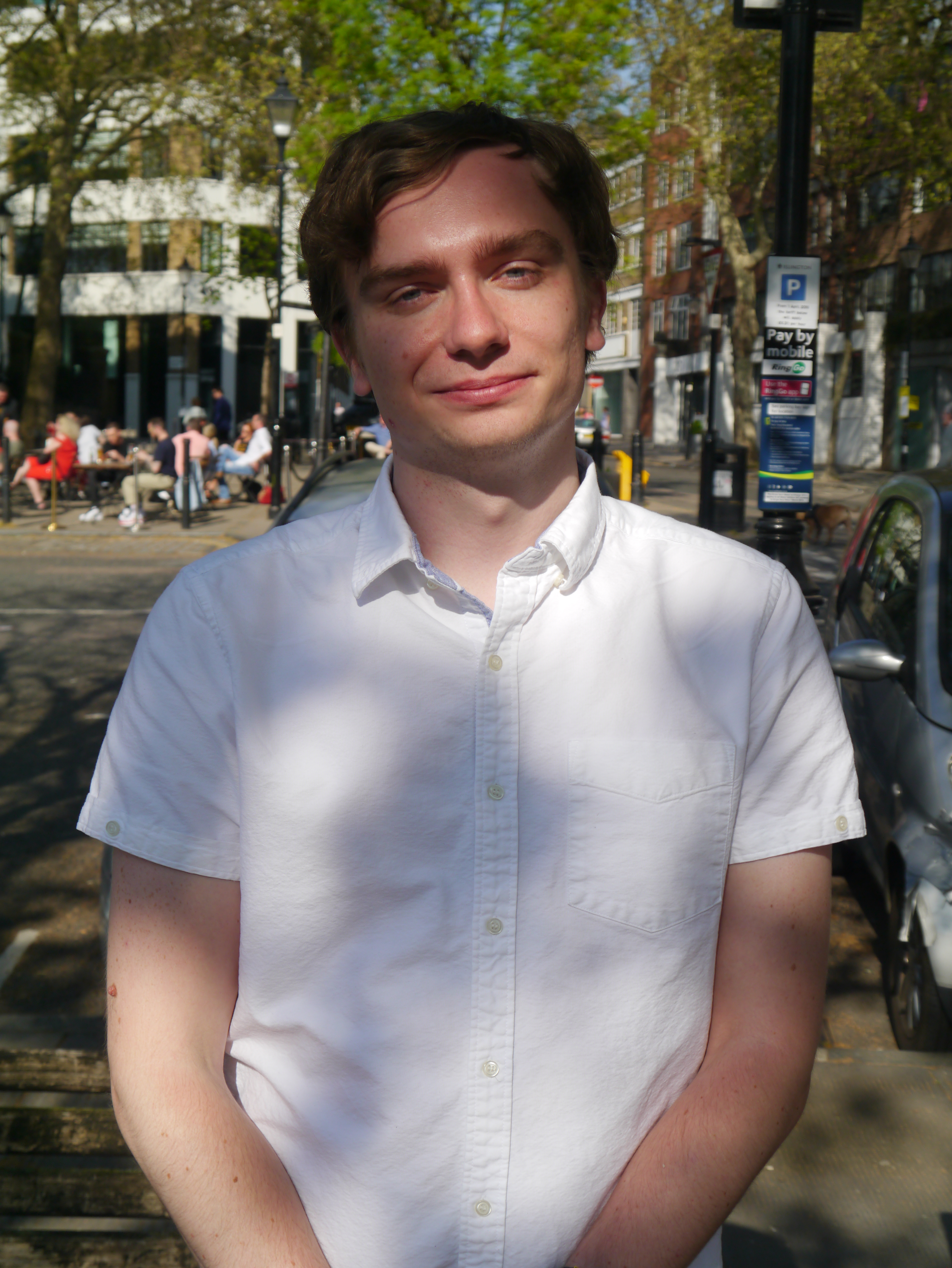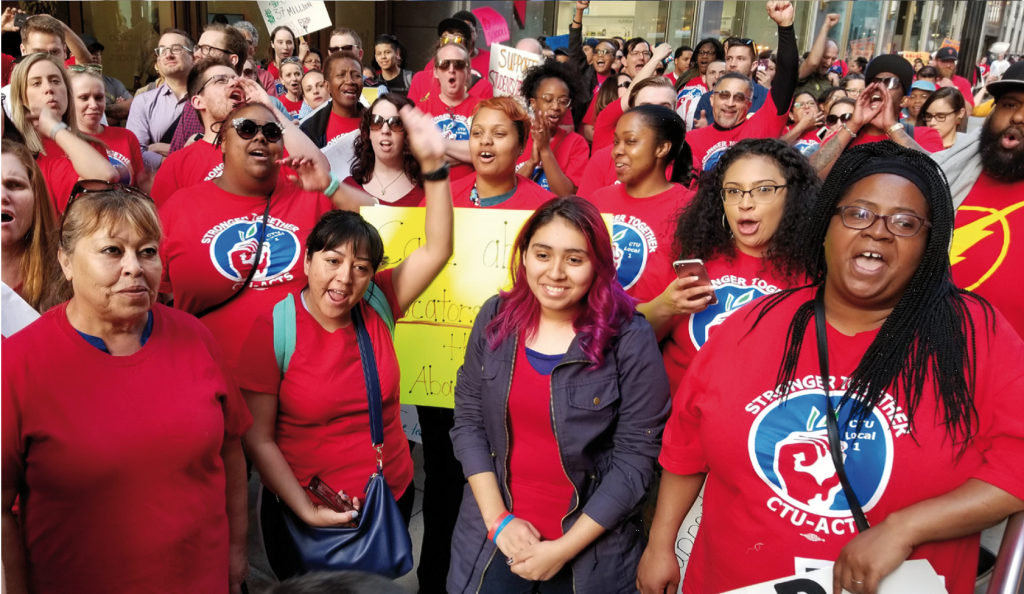
Organising the teachers – challenges and possibilities
On Wednesday 26 February, members of the NEU Left – the broad left-wing alliance within the National Education Union (NEU) – met in the Marx Memorial Library in London with Debby Pope, representative of the Executive Board of the Chicago Teachers Union.
The aim of this meeting was simple: to discuss common challenges, possibilities, and most importantly, how the rank and file members of the Chicago Teachers Union (CTU) had managed to successfully build a broad left-wing alliance that achieved power in the union structures and made a difference, including many successful grassroots campaigns.
Context
In the USA, the turf is divided between the trade unions, so there is no competition between them, except in some places such as West Virginia where there are no recognised unions and therefore no bargaining rights.
This is unlike Britain, where in schools, the NUT, the ATL and the NASUWT, all teachers’ unions, might be recognised with different workers in different unions.
Fortunately, the recent merger of the NUT and the ATL into the NEU has strengthened worker solidarity in line with the principle of industrial unionism – one trade union for the whole workforce so that workers can fight together.
The merger into the NEU also strengthened the left-wing alliances within these two trade unions, bringing them together into a new NEU Left that groups together the majority of progressive forces within the teacher trade unions. The NEU Left has a majority of leadership positions in the new union and runs joint electoral slates based on joint demands and principles.
To some extent, this merger got rid of the craft basis that historically holds back trade unionism in Britain, whereby the NUT was for classroom teachers, ATL for teaching staff, etc. It also lessened the potential for one teaching union poaching from another. Not to mention that general unions such as Unite can also work in schools.
Turf divisions in the USA have remained stable for a long time, especially in the South, where there have always been less rights and representation. There used to be rights and representation in the border States, but much of this has been lost in the last 30 years under Republican administrations that attacked trade unions.
In August 2009, the CTU elected a rank and file left-wing leadership. This came out of the campaign of the Caucus of Rank and File Educators, which organised community forums, work with community groups, study groups and rallied together for the union elections.
This new rank and file leadership entered a situation where they were confronting both right-wing Democrats and Republicans intent on accelerating the attacks on teachers’ rights and working conditions, job losses and funding cuts and the privatisation of education in Chicago.
They also renewed the democratic lifeblood of the union. Unlike the NEU and most other trade unions that organise meetings on the basis of members in a district or branch, eg Waltham Forest District members, the CTU holds Chicago-wide meetings of reps, not union members. This regular meeting is called the House of Delegates.
The House of Delegates elects an Executive Board, a board representing different sectors, and votes on the union’s policies and actions. Any member can go to the House of Delegates but only reps have voting and speaking rights. In a school, there is one rep per every 60 members.
The CTU strike in 2012
During the 1990s and accelerating from 2000, the establishment of Charter Schools picked up pace. Charter Schools are for profit, non-unionised workplaces with less regulations that can pay less and change the curriculum, similar to Academies in Britain.
Originally, teachers just wanted to attack the Charter Schools and didn’t see workers in these schools as comrades. The CTU began to educate their members on why they should struggle to unionise these Charter Schools.
In 2011, foreseeing the struggle with the teachers, the State of Illinois changed strike rules for Districts with over 300,000 students, which was a backhanded way of raising the threshold for Chicago, the only locality where this was the case. Illinois demanded that 75% of the union’s membership vote yes for a strike to be legal.
“In our view, we had to get at least 80% before we would go out,” says Debby.
In 2012, after two years of the union preparing itself, the CTU would vote to strike with 90% of teachers, and 98% of those voting, agreeing to strike.
Tens of thousands of teachers would picket for more than a week and win pay rises and fairer test scores for children, as well as pushing back the Chicago mayor’s neoliberal reforms. However, just as important as that was the amount of cadres and public support developed, with 66% of parents backing the union in one poll.
Since their election, the new left-wing leadership had tried to build up a member-driven union that would fight alongside parents and students.
In addition, it had prepared its members for strike action, since most of them had not experienced the strikes from 1967 to 1987.
How did they do it?
“When the new rank and file leadership came in from 2009,” says Debby, “we started talking about the issues. We started doing surveys. We did structured litmus tests of how we could mobilise our members to defeat this situation. For example, on a Friday, asking all our schools to get out in front of the gates and take pictures.”
“We looked at the schools where people were NOT wearing red on these campaign days out, were not responding to our surveys, where the reps did not have regular meetings, and where they were terrified of bullying managers.”
The leadership established an Organising Department that held workshops with reps and other activists on defending their contract and schools, fighting the establishment of Charters and for school funding, and how to use research and talk to parents.
Members spent their summers at workshops and doing community outreach as part of an organising internship programme.
When the Illinois Board of Education voted to shut down 17 schools, the union mobilised members and parents to meet up, disrupt, occupy and protest, putting the organising theory into practice and giving them a taste of the strike to come.
The union focused on the big picture at all times, pointing out that the fight for their members was also the fight for decent education in Chicago and the USA, and pointing out how schools in Black and Latino neighbourhoods would be the worst affected, shut down and privatised.
The union put together small, local Action Committees that coordinated with the workforce, including members of other unions, built activities and communicated with parents and the community, raising the ideological issues as part of the big picture at the workplace.
The membership developed a broad list of demands for the whole union. Members trained by the Organising Department phoned up new, low paid and the least protected members and talked about what the union was doing. Above all, they invited them to attend a workshop, rally or committee meeting and kept tabs on their involvement.
The Research Department created a special report that outlined the union’s case, backed up by evidence, and sent it to parents, politicians, educational experts and the press, attacking the Chicago education system, building support across all sections of society and pairing the report down into 10 key points that could fit on the front of a leaflet for meetings.
Finally, before the strike vote itself, the union held a practice vote, so that they could see what the reaction was. For the real vote, they pulled out all the stops and focused on where their organisation had to improve so that they could beat the threshold.
Debby adds, “We organised parents, teachers, staff and students for walk-ins, with small rallies outside and walking into school together at the start of the school day. It was easy to organise and allowed us to talk to parents and kids.”
“We did informational picketing about issues we all care about, before or after school, without stopping work, with signs and flyers. We highlighted our campaigns on issues like quality schools, librarians, music and resources.”
“The politics was framed about taxation and spending for the public good, too, not supporting unaffordable housing and losing our students to gentrification, and other issues that parents and kids care about.”
Lessons for the labour movement and the YCL
Here, there are lessons not only for the NEU and other trade unions, but also for the YCL in how we develop our campaign work and successful strategies to engage our grassroots and the wider public.
Developing our members into cadres, developing each member’s skills, abilities and Communist methods of work, must be at the forefront of everything we do in the labour movement and in the League.
At every stage, we must be training our members in the practice of organising the work of our trade unions, our organisations and the League, organising other people to do this work, and winning on behalf of our class.
I believe that one of the reasons that the YCL is different and revolutionary in comparison to the rest of the Left is that we encourage and act on deeds and not endless words towards Socialism, and we show this in our work in the labour and progressive movements.
Our policies and strategies must always reflect this. When we talk about how we can organise and win, we must always stop ourselves and think how we can put this into practical activities and get on with it.
- Can we organise walk-ins and informational pickets or similar activities? Branch meetings, leafleting, street stalls and flyposting have a similar function. What are the challenges and possibilities that these activities present? How can they be overcome?
- How do we keep in touch with our new and more isolated members? Who takes care of this? How do we connect them with branches or other members?
- The EC is working on a Youth Charter, a set of 10 key and practical demands for members and branches to formulate their campaign work around. When the Youth Charter is released, how will this campaign work be developed?
- Do we need a research and/or ideological department? Why might this be useful?
- We have a campaigns department that wants representation from every branch in Britain. Would you like to be involved in developing our campaign activities? Get in touch with your Branch Secretary or a member of the Executive Committee.
Robin Talbot



